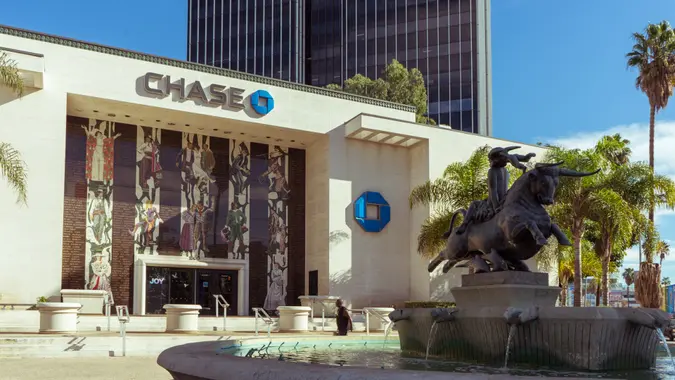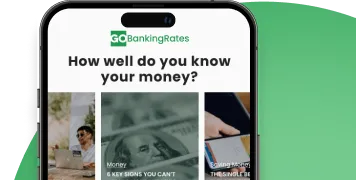

GOBankingRates' editorial team is committed to bringing you unbiased reviews and information. We use data-driven methodologies to evaluate financial products and services - our reviews and ratings are not influenced by advertisers. You can read more about our editorial guidelines and our products and services review methodology.
20 Years
Helping You Live Richer
Reviewed
by Experts
Trusted by
Millions of Readers
Money orders are a secure way to pay bills or send cash. Because a money order is prepaid, it won’t bounce like a personal check can.
You can purchase a money order from many types of vendors, and you’ll typically pay a fee. If you’re a Chase customer, you’ll pay a money order fee of $0 to $5, depending on what type of checking or savings account you have.
Your typical Chase money order will cost $5; however, prices may vary depending on your account. Chase checking and savings account holders can buy money orders for up to $1,000. Here are the money order fees based on the type of checking or savings account:
| Account | Money Order Fee |
|---|---|
| Chase Total Checking® account | $5 |
| Chase Premier Plus Checking account | $0 |
| Chase Sapphire Checking account | $0 |
| Chase Secure Checking account | $0 |
| Chase College Checking account | $5 |
| Chase High School Checking account | $5 |
| Chase Savings account | $5 |
| Chase Premier Savings account | $5 |
Chase money orders are a convenient way to ensure your payment goes through. Here are a few key takeaways on money orders in general:
It never hurts to comparison shop, especially when you don’t want to spend more money just to spend your money. To see how Chase’s fees for money orders stack up, here are some competitors’ money order fees:
Get the latest news on investing, money, and more with our free newsletter.
By subscribing, you agree to our Terms of Use and Privacy Policy. Unsubscribe at any time.

You're now subscribed to our newsletter. Check your inbox for more details.

Although the maximum amount is typically $1,000 for U.S. money orders, you might be able to buy multiple money orders if needed. In addition to the outlets mentioned above, you can buy money orders at other banks, credit unions and retail outlets such as Walgreens.
To purchase a money order from Chase, you’ll need to visit a branch. Chase does not issue money orders online.
You can follow these steps to get a money order from Chase:
After you buy your money order, immediately fill out the money order using black gel ink. Keep your receipt until you confirm the payee has cashed the money order. Ideally, deliver your money order in person. Otherwise, mail it directly to the payee. The recipient will need a photo ID to cash or deposit the money order.
Caitlyn Moorhead contributed to the reporting for this article.
The information related to Chase checking and savings accounts was collected by GOBankingRates and has not been reviewed or provided by the issuer of these products. Product details may vary. Please see the issuer’s website for current information. GOBankingRates does not receive commission for these products.
Editorial Note: This content is not provided by Chase. Any opinions, analyses, reviews, ratings or recommendations expressed in this article are those of the author alone and have not been reviewed, approved or otherwise endorsed by Chase.